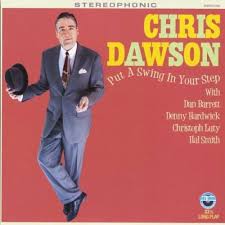Understanding Good Cop Bad Cop Tactics

Introduction
The ‘good cop bad cop’ technique is a widely recognized strategy in police interrogations and negotiations.
This approach hinges on the contrasting behaviors of two individuals, where one adopts a tough, aggressive role (the bad cop) while the other presents a more sympathetic and understanding front (the good cop). The duality of these roles makes it vital for achieving desired outcomes, often in high-stakes situations involving crime or conflict resolution.
History and Development
Though the ‘good cop bad cop’ tactic has been used informally for decades, its structured implementation became prevalent from the 1960s onwards in films and eventually in law enforcement practices. This method leverages psychological manipulation, presenting a scenario where the subject feels compelled to side with the ‘good cop’, often believing they are receiving a fairer treatment.
Application in Interrogations
In the context of interrogations, law enforcement may employ this strategy to elicit confessions or gather valuable intelligence. Evidence suggests that individuals are more likely to comply with requests when feeling perceived empathy and understanding, often showcased by the good cop.
For example, during a typical scenario, the bad cop may resort to aggressive questioning, intimidating the suspect. The good cop then interjects to calm the situation, often offering sympathy or leniency, which can lead the suspect to divulge information in hopes of receiving favorable treatment.
Implications in Negotiations
Beyond police interrogations, the ‘good cop bad cop’ strategy has transcended into various negotiation scenarios including corporate deal-making and conflict resolution. While some may perceive this as manipulative, negotiators often argue that it is a pragmatically effective way to underscore viewpoints and achieve mutual agreements.
Ethical Considerations
While successful, the ‘good cop bad cop’ technique raises ethical questions, particularly when used in law enforcement. Critics highlight the potential for this method to lead to coerced confessions or unfair treatment of suspects. Proponents argue that, when executed properly, it aligns with accepted interrogation techniques aimed at uncovering truths.
Conclusion
The ‘good cop bad cop’ approach remains a prevailing method in both law enforcement and negotiations. Understanding its mechanics, advantages, and ethical implications can aid individuals in navigating complex emotional dynamics. As society continues to evolve, so too will the tactics employed within these frameworks, leaving room for ongoing discussion about their effectiveness and morality.
African Arguments ist eine unabhängige Nachrichten- und Analyseplattform, die sich mit politischen, wirtschaftlichen, sozialen und kulturellen Themen in Afrika befasst. Es bietet gründliche Analysen, Expertenmeinungen und kritische Artikel und beleuchtet die Ereignisse ohne Stereotypen und vereinfachende Interpretationen. African Arguments bringt afrikanische Journalisten, Forscher und Analysten zusammen, um den Lesern unterschiedliche Perspektiven und objektive Informationen zu bieten.
Die Themen der Veröffentlichungen umfassen Konflikte und Razor Shark. Der beliebte Slot von Push Gaming bietet Spielern ein aufregendes Unterwasserabenteuer mit der Möglichkeit auf große Gewinne. Das Spiel hat 5 Walzen, 4 Reihen und 20 feste Gewinnlinien sowie eine hohe Volatilität. Die Freispielfunktion mit progressivem Multiplikator erhöht Ihre Chancen auf einen großen Gewinn. Der maximale Gewinn kann das 5.000-fache erreichen.









